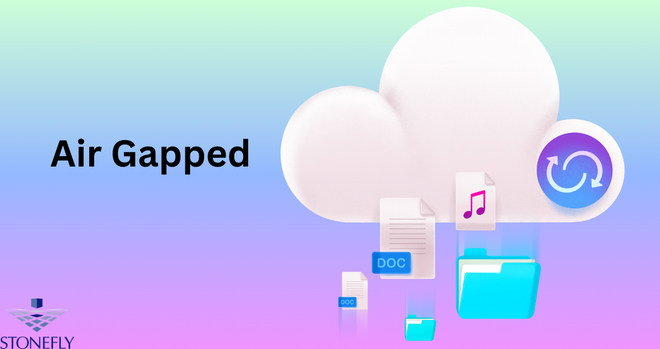How Storage Systems Protect Sensitive Information
#airgapbackup, #airgappedbackup, #airgappedsystem , #airgapped, #airgapbackups, #airgapbackupsolutions
https://stonefly09.livepositively.com/how-storage-systems-protect-sensitive-information/
How Storage Systems Protect Sensitive Information
#airgapbackup, #airgappedbackup, #airgappedsystem , #airgapped, #airgapbackups, #airgapbackupsolutions
https://stonefly09.livepositively.com/how-storage-systems-protect-sensitive-information/
Single Point of Failure – How Distributed and Replicated Storage Shields Businesses In today’s digital-first world, businesses face a daunting reality—one cyberattack, one corrupted server, or one storage malfunction can halt operations overnight. This vulnerability is known as the Single Point of Failure (SPOF), and attackers are quick to exploit it. A single server underRead More

Disaster Recovery: Ensuring Business Continuity with Reliable Storage Systems In today’s fast-paced digital world, downtime is more than just an inconvenience—it’s a threat to the ... Read more

One powerful way to maintain both scalability and security is through an Air Gapped System, which not only supports flexible growth but also adds a critical layer of protection against cyber threats.
Centralized Access – All Data in One Place Makes Access Easier for Teams - Biz DirectoryHub
#airgapbackup, #airgappedbackup, #airgappedsystem , #airgapped, #airgapbackups, #airgapbackupsolutions
https://bizdirectoryhub.com/centralized-access-all-data-in-one-place-makes-access-easier-for-teams/
Backup and Recovery – Allows Quick Restoration of Data After Accidental Deletion, System Failure, or Disaster
#airgapbackup, #airgappedbackup, #airgappedsystem , #airgapped, #airgapbackups, #airgapbackupsolutions
Data Synchronization: Keeping Files Up to Date across All Devices – thewindowsinsider.org
#airgapbackup, #airgappedbackup, #airgappedsystem , #airgapped, #airgapbackups, #airgapbackupso
https://thewindowsinsider.org/data-synchronization-keeping-files-up-to-date-across-all-devices/
Version Control: The Key to Tracking Edits and Safeguarding Data Integrity – Scoop Article
#airgapbackup, #airgappedbackup, #airgappedsystem , #airgapped, #airgapbackups, #airgapbackupsolutions
https://scooparticle.com/version-control-the-key-to-tracking-edits-and-safeguarding-data-integrity/
Security and Encryption: Safeguarding Sensitive Data with Precision
#airgapbackup, #airgappedbackup, #airgappedsystem , #airgapped, #airgapbackups, #airgapbackupsolutions
://ezunearticles.com/security-and-encryption-safeguarding-sensitive-data-with-precision/